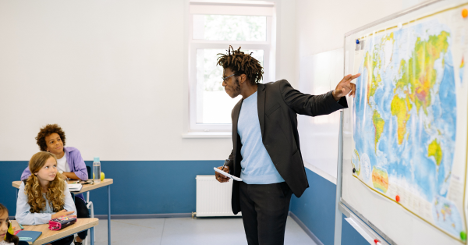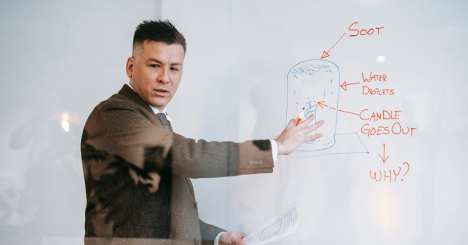8 Eye-Opening Lessons from Teaching Story of the World: Insights and
Strategies

Eye-Opening Lessons from Teaching Story of the World
Eye-Opening Lessons from Teaching Story of the World
Eye-Opening Lessons from Teaching Story of the World
Eye-Opening Lessons from Teaching Story of the World
Eye-Opening Lessons from Teaching Story of the World
Introduction
Teaching history is an art form, especially when it comes to engaging young minds. “Story of the World,” a renowned history curriculum, offers a captivating journey through the annals of time. As an educator delving into this curriculum, you’re embarking on a quest to not just teach history but to ignite a passion for it. Through my own experience, I’ve gathered eight invaluable lessons that have transformed my approach to teaching Story of the World. Let’s explore these insights together, along with actionable strategies to enhance your teaching endeavors.
Lesson 1: Embrace Multimodal Learning
Leveraging Diverse Teaching Methods
Incorporating various teaching modalities enriches the learning experience for students. From visual aids like maps and timelines to auditory resources like podcasts and music, embracing multimodal learning ensures every student finds a method that resonates with them.
Lesson 2: Foster Curiosity Through Storytelling
The Power of Narrative in History
History is not a collection of dates and facts but a tapestry of stories waiting to be unveiled. By weaving captivating narratives, you can ignite curiosity and foster a deeper understanding of historical events. Encourage students to explore primary sources and uncover the human stories behind the facts.
Lesson 3: Cultivate Critical Thinking Skills
Engaging with Primary Sources
Empower students to think critically by analyzing primary sources. Whether it’s letters, artifacts, or eyewitness accounts, these sources provide firsthand insights into historical events. Encourage students to question, evaluate, and draw their own conclusions, cultivating a habit of critical inquiry.
Lesson 4: Create Interactive Learning Experiences
Immersive Activities and Projects
Learning doesn’t have to be confined to textbooks and lectures. Introduce interactive activities and projects that bring history to life. From reenacting historical events to crafting artifacts, hands-on experiences deepen understanding and foster a sense of connection with the past.
Lesson 5: Foster Global Perspectives
Exploring Diverse Cultures and Perspectives
History is a tapestry woven from the diverse threads of human experience. Encourage students to explore different cultures, societies, and perspectives, fostering empathy and understanding across geographical and temporal boundaries.

Lesson 6: Incorporate Technology Thoughtfully
Harnessing Digital Resources
Technology can be a powerful tool for enhancing historical education, offering access to a wealth of resources and interactive learning platforms. However, it’s essential to use technology thoughtfully, ensuring it supplements rather than supplants traditional teaching methods.
Lesson 7: Encourage Collaborative Learning
Building Communities of Learners
Learning is a collaborative endeavor, and creating a supportive classroom community enhances the educational experience for all. Encourage collaboration through group projects, discussions, and peer feedback, fostering a sense of shared inquiry and mutual respect.
Lesson 8: Reflect and Iterate
Continuous Improvement in Teaching
Teaching is a journey of growth and discovery, and reflection is a vital part of that process. Take time to reflect on your teaching practices, seeking feedback from students and colleagues, and be willing to iterate and adapt based on what works best for your students.

Conclusion
Teaching Story of the World is more than just imparting historical knowledge; it’s about inspiring a lifelong love of learning. By embracing diverse teaching methods, fostering curiosity, and cultivating critical thinking skills, you can create an enriching educational experience that resonates with students long after they leave your classroom. So go forth, armed with these insights and strategies, and embark on your own journey of transformative teaching. Together, we can unlock the wonders of history and empower the next generation of learners.
FAQS
Q: How can I adapt these lessons for different grade levels?
A: These lessons are flexible and can be tailored to suit the needs of various grade levels. For younger students, focus on hands-on activities and storytelling, while older students can engage more deeply with primary sources and critical analysis.
Q: Are there any recommended resources for teaching Story of the World?
A: Yes, along with the Story of the World curriculum books, you can explore supplementary resources such as documentaries, museum exhibits, and online archives to enrich your teaching experience.
Q: How can I assess student learning effectively?
A: Assessment can take many forms, including projects, presentations, written assignments, and quizzes. Consider incorporating a mix of formative and summative assessments to gauge student understanding and progress.
Recommended Multimedia Resources
| Resource | Description |
| Smithsonian Learning Lab | Curated collections of historical artifacts and interactive exhibits |
| Crash Course World History | Entertaining and informative YouTube series covering various historical topics |
| National Geographic Kids | Engaging articles, videos, and quizzes on world history for younger students |
Sample Interactive Activities
| Activity | Description |
| Historical Role-Playing | Students assume the roles of historical figures and engage in simulated debates or discussions |
| Artifact Investigation | Students analyze replicas of historical artifacts and deduce their significance and context |
| Time Travel Journal | Students imagine themselves as time travelers, documenting their experiences in different historical periods
|
[bdp_post_carousel show_tags=”false” show_comments=”false” show_category=”false” dots=”false” limit=”10″ orderby=”rand”]
You can signup for free
